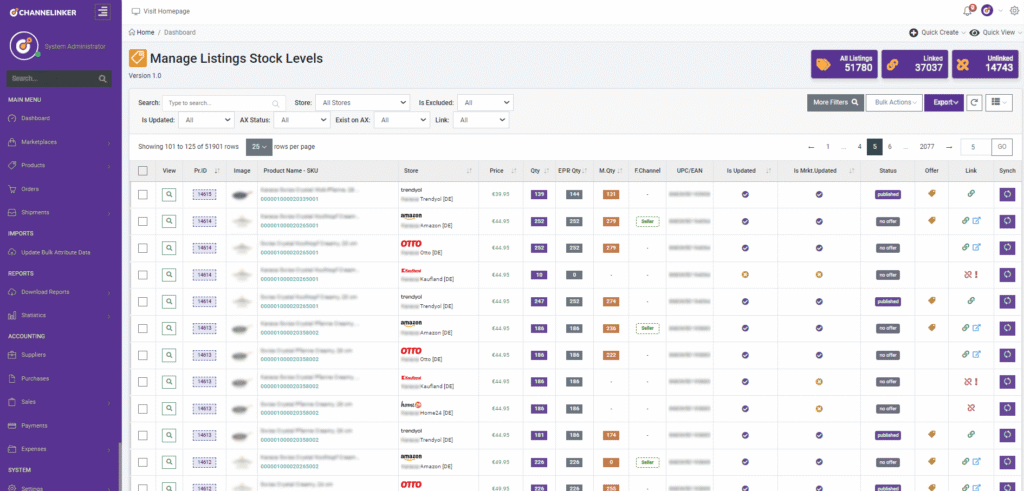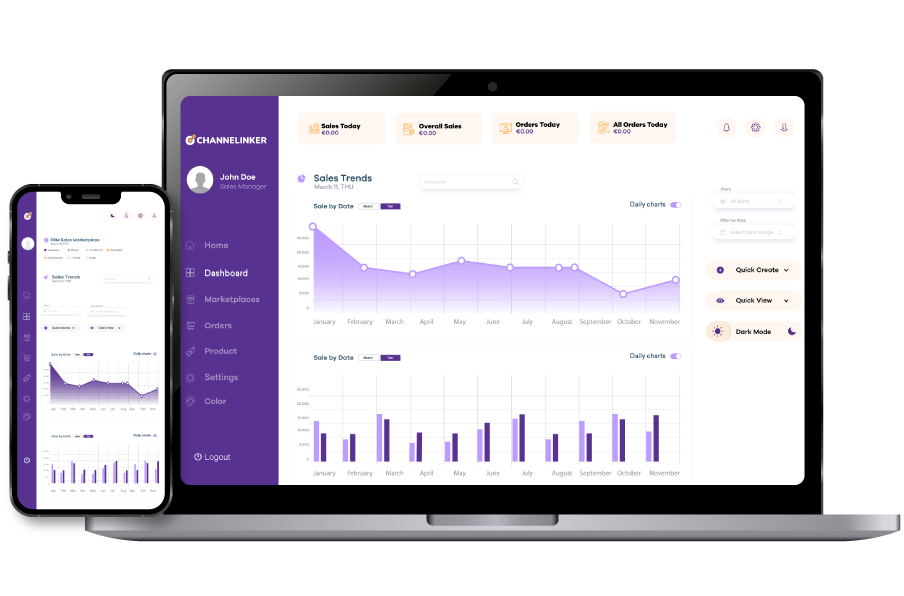Amazon Inventory Management and Fulfillment Options

Effective amazon inventory management and choosing the right fulfillment options are crucial components of successful selling on Amazon. Proper inventory strategies enhance customer satisfaction, optimize costs, and streamline operations. This guide explores inventory management strategies, compares fulfillment methods such as Fulfillment by Amazon (FBA) and Fulfillment by Merchant (FBM), discusses multi-channel fulfillment, inventory health and replenishment, and offers practical solutions for handling out-of-stock scenarios.
Amazon Inventory Management Strategies
Inventory management is fundamental for maintaining a smooth operation and ensuring products are always available to customers. Effective inventory management strategies include forecasting demand accurately, optimizing stock levels, reducing storage costs, and enhancing supply chain efficiency.

Sellers should utilize inventory management software to track inventory levels in real-time, automate restocking alerts, and minimize manual errors. Implementing tools such as Channelinker’s comprehensive Inventory Management Solutions can significantly streamline these processes by automating stock updates and forecasting across various marketplaces.
Incorporate inventory auditing regularly to identify discrepancies between recorded inventory and actual stock. This practice ensures accuracy, reduces wastage, and enhances operational transparency.
Fulfillment by Amazon (FBA) vs. Fulfillment by Merchant (FBM)
Understanding the differences between Fulfillment by Amazon (FBA) and Fulfillment by Merchant (FBM) helps sellers make informed decisions about managing order fulfillment effectively.
Fulfillment by Amazon (FBA) involves sending products directly to Amazon’s fulfillment centers, where Amazon handles storage, shipping, customer service, and returns. Key benefits of FBA include increased eligibility for Prime and Buy Box placement, improved customer trust, and reduced operational burdens.
Fulfillment by Merchant (FBM) requires sellers to manage storage, shipping, and customer service independently. FBM offers greater control over inventory handling, customized packaging, and potentially lower costs for high-volume or oversized items.
To determine the most suitable option, consider factors such as product size and weight, sales velocity, storage costs, and operational capacities. Utilizing Amazon’s FBA Revenue Calculator can assist in making data-driven decisions.
Multi-Channel Fulfillment
Multi-channel fulfillment enables sellers to leverage Amazon’s extensive fulfillment network to fulfill orders from other sales channels like Shopify, Walmart, eBay, and more. This service streamlines logistics, reduces operational complexities, and enhances customer satisfaction through consistent and reliable delivery experiences.

Amazon’s Multi-Channel Fulfillment (MCF) allows sellers to manage inventory centrally within Amazon’s warehouses while serving multiple online sales channels efficiently. By integrating a multi-channel approach, sellers can expand their reach, improve inventory turnover, and optimize operational efficiency.
Utilizing integration tools like Channelinker’s Multi-Channel Integration Services simplifies multi-channel management by automating inventory synchronization, order tracking, and fulfillment processes.
Inventory Health and Replenishment
Monitoring and maintaining inventory health is crucial for ensuring continuous product availability, reducing stockouts, and preventing overstocking. Amazon provides sellers with Inventory Performance Index (IPI) scores, reflecting how well inventory is managed across key metrics such as sell-through rate, excess inventory, and stranded inventory.

Regular analysis of inventory reports available in Amazon Seller Central helps identify underperforming inventory, excess stock, or items nearing depletion. Setting automatic reorder points based on historical sales data, seasonality trends, and lead times ensures timely replenishment and maintains optimal inventory levels.
Optimizing inventory turnover rates and reducing long-term storage fees contribute significantly to profitability. Explore Amazon’s Inventory Dashboard regularly and take prompt actions to address issues flagged by Amazon’s performance metrics.
Handling Out-of-Stock Situations
Out-of-stock situations negatively impact sales performance, customer satisfaction, and product visibility on Amazon. Effectively managing these scenarios requires proactive strategies, accurate forecasting, and contingency planning.
Implement inventory forecasting methods to anticipate sales spikes, seasonal demands, and market trends accurately. Use inventory alerts to trigger timely replenishment and avoid unexpected stockouts.
If stockouts occur, promptly updating product listings and clearly communicating availability timelines to customers helps maintain trust. Additionally, leveraging temporary deactivation of listings or adjusting advertising spend can mitigate negative impacts until inventory levels normalize.
Frequently Asked Questions
What are the key benefits of Amazon FBA over FBM?
Amazon FBA offers streamlined logistics, enhanced visibility, Prime eligibility, and reduced operational workload compared to FBM, which offers more control and potentially lower costs for specific product categories.
How can sellers manage inventory across multiple sales channels efficiently?
Using Amazon’s Multi-Channel Fulfillment and leveraging integrated software solutions like Channelinker significantly simplifies multi-channel inventory management, ensuring consistency and accuracy across platforms.
Why is the Inventory Performance Index (IPI) important?
IPI measures inventory management efficiency, influencing storage limits and potential fees. Maintaining a high IPI helps avoid additional costs and ensures smooth operations.
How often should sellers perform inventory audits?
Regular audits, recommended at least quarterly, ensure accuracy, identify discrepancies early, and maintain optimal inventory levels.
What strategies are effective for preventing out-of-stock situations?
Accurate forecasting, setting reorder alerts, regular inventory checks, and implementing proactive replenishment strategies significantly reduce the likelihood of stockouts.
Conclusion: Mastering Inventory and Fulfillment
Mastering inventory management and fulfillment options significantly impacts an Amazon seller’s operational efficiency, profitability, and customer satisfaction. By adopting strategic inventory practices, selecting suitable fulfillment methods, effectively managing multi-channel sales, ensuring inventory health, and proactively addressing stockouts, sellers can build a resilient and profitable e-commerce operation.

Explore comprehensive solutions offered by Channelinker to streamline inventory management, optimize fulfillment operations, and efficiently manage multi-channel sales, ensuring sustained growth and marketplace success.
Related Articles
Complete Guide to Amazon Product Listing Optimization
Navigating Amazon Seller Central Effectively
Integrating Shopify with Amazon: Step-by-Step Guide
External Resources
Amazon Seller Central Inventory Guidelines
Amazon Seller University Inventory Management Training
Enhance your inventory management strategies and fulfillment operations by contacting Channelinker for personalized support and guidance.


